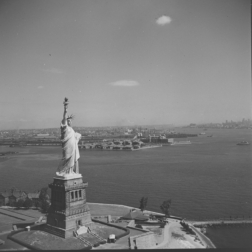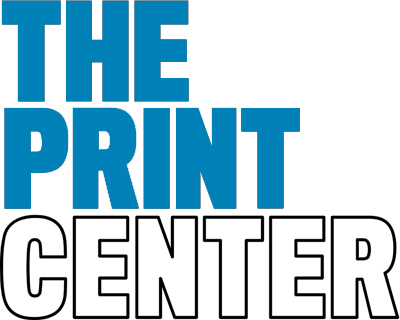Given to the United States by France in honor of their alliance during the American Revolution, the Statue of Liberty has stood as a symbol of freedom since its dedication in 1886. These works by the pioneering photojournalist Margaret Bourke-White provide four distinct viewpoints of the statue, which was designated a national monument in 1924.
Bourke-White used a variety of photographic techniques to re-present this American icon to a public who likely consumed these images through the pages of periodicals, such as the weekly magazine Life. A close-up taken at the base abstracts Lady Liberty’s billowy robe against the backdrop of marshmallow clouds. A wide-angle shot situates her in New York Harbor with the infamous immigration inspection station on Ellis Island visible at right. Bourke-White employs an oblique angle and a tight crop to create a synecdoche in which the torch stands in for a whole. This image, with its dramatically diminishing depth of field, draws a connection between the statue and New York City, a veritable monument to capitalism, urbanization and all things modern. Still a relatively nascent technology, the helicopter helped Bourke-White capture Sightseers peering from the windows of the Statue of Liberty. This face-to-face reckoning with one of the most iconic American monuments was one of 12 photographs reproduced in “A New Way to Look at the U.S.,” a photo essay in the April 14, 1952 issue of Life.





